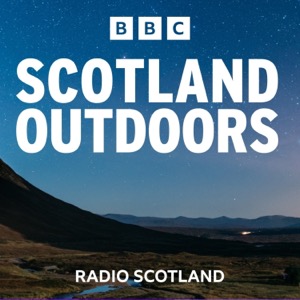Inchindown Echo, Edinburgh's Herbarium and the 120 Mile Postie's Path
Scotland Outdoors - A podcast by BBC Radio Scotland

The Scottish Crannog Centre on the banks of Loch Tay is a bustling model Iron Age village, filled with various craftspeople to demonstrate ancient crafts and technologies. Mark went along to find out how the site has grown over the past few years, and how the construction of the crannog over the water is coming along.Jenny Graham follows the Postie’s Path – a route once taken by “Big John MacKenzie”, a post runner in the early 19th century, which runs along Strathconon Glen in the West Highlands, finishing at Achnasheen. The route used to take several days for the postman to complete on foot, but Jenny has opted to trace the route – or what remains of it – on her bike.Helen Needham has been out and about in the early morning to catch the best of the spring dawn chorus. Joining her is Ian Broadbent, the North East of Scotland’s specialist bird recorder from the British Trust for Ornithology.Passing through West Lothian, it is hard to miss the huge angular mounds dotted across the landscape. However, the history of these mounds, or bings – and the shale oil industry that created them – may be lesser known. Mark met up with Nicola Donaldson from the Shale Museum to find out more about the historic industry, and how it created these man made landmarks.The Torridon Mountain Rescue Team that has been operating in the West Highlands since 1972. Jenny Graham has herself been a member of the group for 10 years, and she met up with some of the other team members to find out about the history of the team, and how mountain rescue has changed in the past 50 years.The Inchindown Oil Tanks are a relic of WWII, located near Invergordon, and are the site of the world’s longest echo. Phil Sime went along to the vast underground space, to experience this echo for himself.Mark has been along to the Royal Botanic Garden in Edinburgh, to have a look at their huge collection of pressed and preserved plants. The Herbarium is home to over three million species, and Mark meets up with Amy Porteous to find out how the collection is used.
